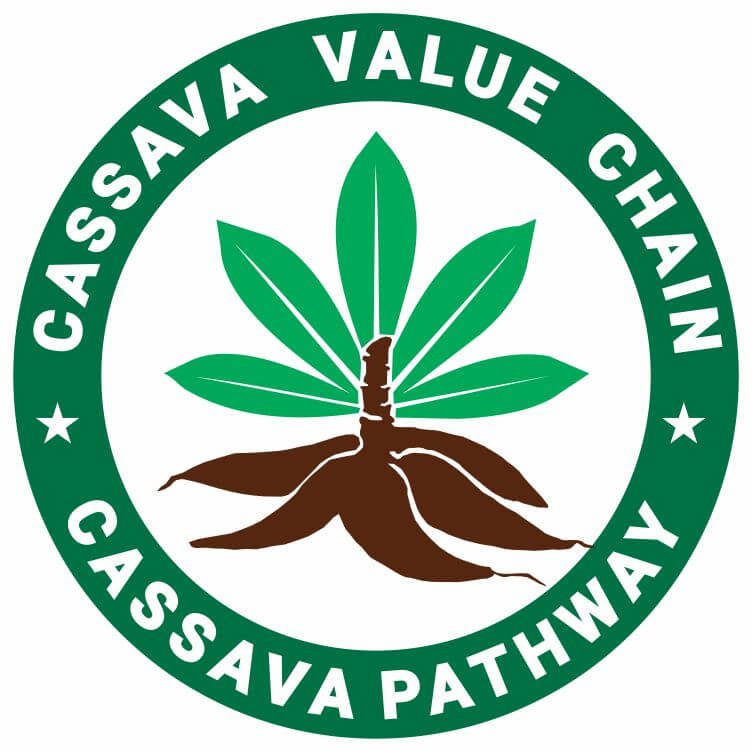Tapioca vs cassava: How are they different? Cassava is a root vegetable, while tapioca is the starch extracted from it. Learn their differences, uses, and how each fits into cooking and nutrition.
When I first studied cassava in one of my Agricultural classes in secondary school, I thought tapioca was synonymous with cassava, though it is somehow from a distance.
Even today, many people confuse both, thinking they’re the same thing. While they’re closely related, they serve different purposes.
Cassava is a starchy root vegetable grown in tropical regions, while tapioca is the refined starch extracted from cassava.
Cassava is used in many traditional dishes, either boiled, fried, or ground into flour.
Tapioca, on the other hand, is mainly used as a thickening agent, in gluten-free baking, or to make chewy pearls for bubble tea.
Let’s explain further:
Related: Tapioca vs Cornstarch

What is Cassava?
Cassava crop is a tuberous root that is a staple food for millions of people, providing a reliable source of carbohydrates. It is drought-resistant and grows well in poor soil, making it a crucial crop in many developing regions.
Types of Cassava
Cassava comes in two main varieties:
- Bitter Cassava: Contains high levels of cyanogenic glycosides, which are toxic if not properly processed. It requires soaking, fermenting, or cooking to remove harmful compounds.
- Sweet Cassava: Contains lower levels of cyanide and can be cooked more easily, though proper preparation is still recommended. See more on bitter cassava vs sweet cassava.
Related: Tapioca Pudding vs Rice Pudding
Uses of Cassava
Cassava is incredibly versatile and used in multiple ways:
- Whole Root: Boiled, fried, or roasted as a staple food.
- Cassava Flour: A gluten-free alternative to wheat flour, commonly used in baking.
- Garri: Fermented and roasted cassava granules popular in West Africa.
- Fufu: A smooth, starchy dough made from pounded cassava, often eaten with soups and stews.
- Cassava Chips: Sliced and fried as a snack.
- Tapioca: Extracted from cassava and used as a thickening agent or in making boba pearls.
Related: The Cassava Industry: A Complete Guide
What is Tapioca?
Tapioca is the starch extracted from cassava root. It undergoes a process that removes fibers and impurities, leaving behind pure carbohydrate content. Tapioca is widely used in both food and non-food applications.
Forms of Tapioca
Tapioca comes in different forms, each suited for various culinary purposes:
- Tapioca Starch: A fine, white powder used as a thickener in soups, sauces, and gravies.
- Tapioca Pearls: Small, round balls used in bubble tea and puddings.
- Tapioca Flour: A gluten-free flour that enhances texture in baked goods.
- Tapioca Flakes: Used in porridges and baby food.
- Tapioca Sticks: Popular in Asian desserts, requiring soaking and cooking before use.
Related: How to Differentiate Tapioca from Arrowroot
Uses of Tapioca
Tapioca’s neutral taste and thickening properties make it valuable in:
- Bubble Tea: The chewy pearls in milk tea are made from tapioca starch.
- Puddings and Desserts: Tapioca pearls are used to make traditional sweet dishes.
- Gluten-Free Baking: Tapioca flour improves the texture of bread and pastries.
- Thickening Agent: Used in gravies, soups, and sauces.
- Commercial Food Production: Found in processed foods like frozen meals and canned soups.
- Textile and Paper Industries: Used as an adhesive and stiffening agent.
Related: Introduction to Cassava Entrepreneurship
Key Differences Between Tapioca and Cassava
Though tapioca and cassava come from the same plant, they differ in several aspects:
| Feature | Cassava | Tapioca |
|---|---|---|
| Definition | A tuberous root vegetable | Starch extracted from cassava |
| Nutritional Content | Contains fiber, vitamins, and minerals | Mostly carbohydrates, little fiber or nutrients |
| Uses | Boiled, fried, pounded, or processed into flour and snacks | Used as a thickener, in baking, and in desserts |
| Taste & Texture | Mildly sweet with a fibrous texture | Neutral taste, smooth texture |
| Processing Required | Needs cooking to remove toxins | Already processed and safe to eat |
Related: What is the Cassava Value Chain? How it Works
Nutritional Comparison: Tapioca vs Cassava
Cassava, as a whole food, has more nutritional benefits than tapioca. Here’s a breakdown:
Cassava (Per 100g, Cooked)
- Calories: 160
- Carbohydrates: 38g
- Fiber: 1.8g
- Protein: 1.4g
- Vitamin C: 20% of the Daily Value (DV)
- Iron: 2% of the DV
Tapioca (Per 100g, Cooked Pearls)
- Calories: 94
- Carbohydrates: 24g
- Fiber: 0g
- Protein: 0g
- Vitamin C: 0%
- Iron: 1%
Cassava provides fiber, vitamins, and minerals, while tapioca is primarily a carbohydrate source with minimal nutrients.
Tapioca is useful as a gluten-free thickener, but cassava is the better option for a more balanced diet.
Related: Tapioca vs Boba: What’s the Difference?
Health Benefits and Risks
Benefits of Cassava
- Rich in Carbohydrates: Provides sustained energy.
- Gluten-Free: Safe for people with celiac disease.
- Contains Resistant Starch: May support gut health and blood sugar control.
- Source of Vitamin C: Helps boost immunity and collagen production.
Risks of Cassava
- Contains Cyanogenic Compounds: Must be properly cooked to avoid toxicity.
- High in Carbohydrates: Excessive consumption can contribute to weight gain.
Benefits of Tapioca
- Easy to Digest: Suitable for people with sensitive stomachs.
- Gluten-Free: A great alternative for gluten-intolerant individuals.
- Non-Allergenic: Rarely causes allergic reactions.
Risks of Tapioca
- Lacks Nutrients: Provides energy but little else nutritionally.
- Can Raise Blood Sugar: High glycemic index, which may impact diabetics.
Related: What Are Tapioca Balls? Are They the Same as Tapioca Pearls?
Tapioca vs Cassava: Which One Should You Use?
Choosing between tapioca and cassava depends on your needs:
- For Nutrition: Cassava is the better choice as it contains fiber, vitamins, and minerals.
- For Thickening and Baking: Tapioca starch is ideal for smooth, gluten-free textures.
- For Bubble Tea and Desserts: Tapioca pearls are a must.
- For Staple Food: Cassava can be boiled, fried, or processed into flour for various dishes.
Related: Tapioca vs Sago
Conclusion
Tapioca and cassava may come from the same plant, but they are not the same.
Cassava is a nutrient-rich root vegetable used in many traditional dishes, while tapioca is a processed starch with various culinary and industrial applications. If you need a fiber-rich staple food, go for cassava.
If you’re looking for a gluten-free thickener or chewy pearls for bubble tea, tapioca is the way to go. Understanding these differences will help you make informed choices in cooking and nutrition.

Chimeremeze Emeh is a writer and researcher passionate about Africa’s most transformative root crop—cassava. Through his work at cassavavaluechain.com, he explores the entire cassava industry, from cultivation and processing to its diverse applications in food, health, and industrial use.
He also writes for palmoilpalm.com, where he shares his extensive experience and deep-rooted knowledge of palm oil, covering red palm oil, palm kernel oil, and refined products. His work there reflects his lifelong connection to agriculture and his commitment to promoting sustainable value chains in Africa.
Driven by curiosity and purpose, Chimeremeze aims to shed light on how cassava continues to empower communities, strengthen food systems, and link traditional farming wisdom with modern innovation.

